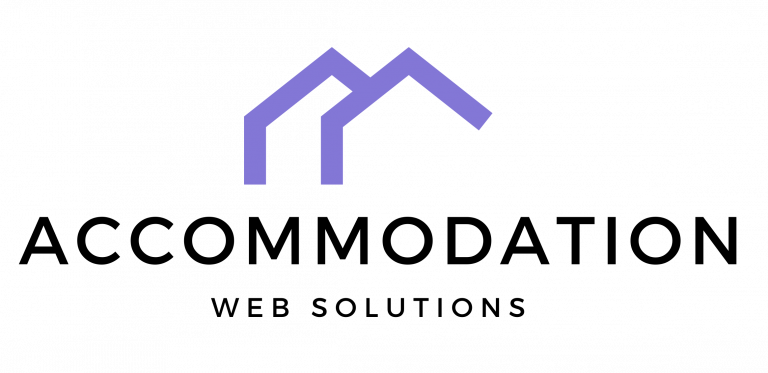Introduction
Blogging has become an essential tool for businesses in the accommodation industry. It allows them to connect with their target audience, showcase their expertise, and ultimately increase bookings and revenue. In this article, we will explore the importance of blogging for accommodation businesses and provide tips and strategies for creating successful blog posts.
Understanding the Importance of Blogging for Your Accommodation Business
Blogging offers numerous benefits for accommodation businesses. Firstly, it allows them to establish themselves as industry experts and build credibility with their target audience. By sharing valuable and informative content, businesses can position themselves as trusted sources of information and attract potential customers.
Additionally, blogging can help increase bookings and revenue. When done effectively, blog posts can drive traffic to a business’s website and encourage visitors to make a booking. By providing valuable information and showcasing the unique features and amenities of their accommodation, businesses can convince potential customers to choose their property over competitors.
Identifying Your Target Audience and Tailoring Your Content
Knowing your target audience is crucial for creating successful blog posts. By understanding who your ideal customers are, you can tailor your content to their needs and interests. This will make your blog posts more relevant and engaging, increasing the chances of attracting and retaining readers.
To identify your target audience, start by analyzing your existing customer base. Look for common demographics, interests, and preferences among your customers. You can also conduct surveys or interviews to gather more information about their needs and expectations.
Once you have identified your target audience, tailor your content to their interests and preferences. Use language and tone that resonates with them, and address topics that are relevant to their needs. By doing so, you will create a connection with your readers and establish yourself as a valuable resource.
Crafting Compelling Headlines and Introductions
Headlines and introductions are the first things readers see when they come across your blog posts. They play a crucial role in capturing their attention and convincing them to continue reading. Therefore, it is essential to craft compelling headlines and introductions that grab the reader’s attention and entice them to explore further.
When crafting headlines, focus on creating curiosity and intrigue. Use strong and descriptive words that convey the value and relevance of your content. Additionally, consider incorporating numbers or statistics, as they tend to attract attention and make your content more tangible.
Introductions should be concise and engaging. Start with a hook that grabs the reader’s attention and introduces the main topic of your blog post. You can use storytelling, ask a thought-provoking question, or present a surprising fact to captivate your readers from the start.
Incorporating Visuals to Enhance Your Blog Posts
Visuals play a crucial role in enhancing the overall appeal and readability of your blog posts. They can help break up text, make your content more visually appealing, and convey information more effectively. Therefore, it is important to incorporate visuals strategically into your blog posts.
There are various types of visuals you can include in your blog posts, such as images, infographics, videos, and charts. Choose visuals that are relevant to your content and help illustrate your points. For example, if you are writing a blog post about the top tourist attractions in your area, include high-quality images of those attractions to give readers a visual representation.
When incorporating visuals, make sure they are properly formatted and optimized for web use. Large file sizes can slow down your website’s loading speed, which can negatively impact the user experience. Compress your images and videos to reduce their file size without compromising quality.
Utilizing SEO Strategies to Boost Your Blog’s Visibility
Search engine optimization (SEO) is crucial for increasing the visibility of your blog posts in search engine results. By optimizing your content for relevant keywords and improving your website’s overall SEO, you can attract more organic traffic and increase your chances of ranking higher in search engine results.
To optimize your blog posts for search engines, start by conducting keyword research. Identify relevant keywords and phrases that your target audience is likely to search for. Incorporate these keywords naturally into your blog posts, including in the title, headings, and throughout the content.
In addition to keywords, other SEO strategies include optimizing your meta tags, using descriptive URLs, and building high-quality backlinks. These strategies help search engines understand the relevance and quality of your content, increasing your chances of ranking higher in search engine results.
There are various tools available to help with SEO, such as Google Analytics and Moz. These tools provide insights into your website’s performance, keyword rankings, and other important metrics. By regularly monitoring and analyzing this data, you can make informed decisions to improve your blog’s visibility and attract more organic traffic.
Building a Consistent Brand Voice and Tone
Building a consistent brand voice and tone is essential for creating a strong and recognizable brand identity. Your brand voice and tone should align with your target audience and reflect the values and personality of your accommodation business.
To develop a consistent brand voice and tone, start by defining your brand’s personality. Consider the characteristics and traits that best represent your business. Are you formal or casual? Serious or playful? By defining your brand’s personality, you can ensure that your content consistently reflects your brand’s identity.
Once you have defined your brand’s personality, create guidelines for your brand voice and tone. These guidelines should outline the language, style, and tone that should be used in your blog posts. Share these guidelines with your content creators to ensure consistency across all your blog posts.
There are several examples of brands with strong brand voices. For example, Airbnb has a friendly and inclusive brand voice that resonates with their target audience. They use conversational language and storytelling to create a sense of community and connection with their readers.
Encouraging Reader Engagement and Interaction
Reader engagement and interaction are crucial for building a loyal and active community around your blog. By encouraging readers to leave comments, share their thoughts, and ask questions, you can create a sense of community and foster a deeper connection with your audience.
To encourage engagement and interaction, make it easy for readers to leave comments on your blog posts. Use a user-friendly commenting system and respond to comments promptly. This shows that you value your readers’ opinions and encourages them to continue engaging with your content.
You can also include calls to action in your blog posts to encourage readers to take specific actions. For example, at the end of your blog post, you can ask readers to share their thoughts in the comments, subscribe to your newsletter, or follow you on social media. These calls to action prompt readers to take action and engage with your brand further.
There are several examples of successful reader engagement and interaction. For instance, Marriott Hotels has a dedicated section on their blog where readers can submit their travel stories and experiences. This not only encourages engagement but also provides valuable user-generated content that can be shared on social media and other marketing channels.
Creating a Content Calendar and Sticking to a Schedule
Creating a content calendar and sticking to a schedule is essential for maintaining a consistent and regular blogging practice. A content calendar helps you plan and organize your blog posts, ensuring that you consistently publish high-quality content that resonates with your target audience.
To create a content calendar, start by identifying the topics and themes you want to cover in your blog posts. Consider the needs and interests of your target audience and align your content with their preferences. Then, assign specific dates and deadlines for each blog post to ensure that you stay on track.
Benefits of sticking to a schedule include improved organization, increased productivity, and better time management. By having a clear plan and schedule, you can allocate your time and resources effectively, ensuring that you consistently publish high-quality blog posts.
Measuring Your Blog’s Success with Analytics
Measuring your blog’s success with analytics is crucial for understanding the impact of your blog posts and making informed decisions to improve your content strategy. By tracking key metrics, you can identify what is working and what needs improvement, allowing you to optimize your blog posts for better results.
Some key metrics to track include website traffic, bounce rate, time on page, and conversion rate. Website traffic provides insights into the number of visitors your blog posts are attracting, while bounce rate and time on page indicate how engaged readers are with your content. Conversion rate measures the percentage of visitors who take a desired action, such as making a booking or subscribing to your newsletter.
There are various tools available to help with analytics, such as Google Analytics and Kissmetrics. These tools provide detailed insights into your website’s performance, user behavior, and other important metrics. By regularly analyzing this data, you can make data-driven decisions to improve your blog’s performance and achieve your goals.
Staying Up-to-Date with Industry Trends and News
Staying up-to-date with industry trends and news is crucial for creating relevant and timely blog posts. By staying informed about the latest developments in the accommodation industry, you can provide valuable insights and information to your readers, positioning yourself as a trusted source of information.
To stay informed, follow industry publications, blogs, and social media accounts. Set up Google Alerts for relevant keywords and topics to receive notifications about the latest news and updates. Additionally, attend industry conferences and events to network with industry professionals and stay updated on the latest trends and innovations.
There are several examples of industry trends and news that accommodation businesses can cover in their blog posts. For example, the rise of eco-friendly and sustainable travel has been a significant trend in recent years. Accommodation businesses can write blog posts about their efforts to reduce their environmental impact and attract eco-conscious travelers.
Conclusion
In conclusion, blogging is a powerful tool for accommodation businesses to connect with their target audience, increase bookings, and establish themselves as industry experts. By understanding the importance of blogging and implementing the strategies and tips outlined in this article, accommodation businesses can create successful blog posts that resonate with their readers and drive results. Remember to identify your target audience, craft compelling headlines and introductions, incorporate visuals, utilize SEO strategies, build a consistent brand voice, encourage reader engagement, create a content calendar, measure your blog’s success with analytics, stay up-to-date with industry trends, and consistently provide valuable and relevant content.




